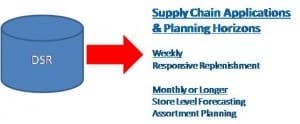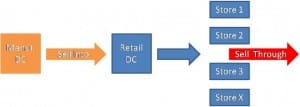I attended the JDA user conference last week, FOCUS 2010 , which took place at Caesars Palace in Las Vegas. JDA completed its acquisition of i2 Technologies at the end of January, and what was most interesting to me was to see how the merger was proceeding.
Historically, i2 and JDA have had very different cultures. i2 tackled some of the most complex supply chain problems from some of the largest companies in the world. At i2 user conferences, you would hear customers talk about high risk, high reward five year transformation plans. i2 was exciting, but also a bit dangerous. Some of these customer transformations did not succeed. Some of the complex solutions i2 developed were not sellable to other customers, or maybe only to a few other customers. And, not surprisingly, some of those one-off solutions were the equivalent of beta solutions, glitch prone and not fully usable.
JDA’s culture is centered on being a “software” company. The company has little to no interest in developing one-off solutions. JDA is interested in repeatability, maintainability, and high customer satisfaction (the company claims 97 percent customer satisfaction).
Overall, I thought the conference showed that the merger is proceeding well. A few points of evidence:
- JDA has retained key i2 personnel, people who I greatly respect, and they are in positions of authority.
- JDA has developed a roadmap to converge its existing and acquired product sets. Existing products from JDA and i2 will continue to be supported. Eventually, a converged product will emerge that contains the best features and functions of both solution sets. Meanwhile, certain products from JDA and i2 have been designated as the “go to market” products—i.e., the products that will be sold in new sales situation.
- JDA has a coherent convergence plan for its multi-echelon inventory optimization and transportation suites, the product suites that we track most closely. The “go to market” products in these suites are the ones that we believe to be superior, and some of them came from i2.
- There is evidence of cross pollination. Traditionally, i2 has been strong in high tech, while JDA has been strong in consumer goods and retail. The convergence product teams I talked to had ex-i2 folks as well as legacy JDA folks involved. These teams are looking at the product sets from a cross-industry perspective and some interesting ideas are emerging as a result. Further, JDA has some good merchandising and category management solutions. I believe that in CPG, category management and supply chain management are beginning to merge based on increased availability of downstream data that needs to be leveraged by both groups.
- JDA has rebranded itself as “The Supply Chain Company.” I used to view them primarily as “The Retail Company.”
However, some challenges still remain. Here are two concerns, one perhaps self-serving:
- JDA’s vision is to have supply chain solutions that span from the factory to the retail shelf. A demand signal repository (DSR) is a key solution component to make this happen. However, DSRs are an emerging, messy solution likely to be bought only by category leaders and the number two company in a category. In other words, this solution is not the repeatable “off-the-shelf” software that fits the JDA development and maintenance philosophy. However, if JDA continues to lack a DSR product, Oracle is likely to emerge as the leader in shelf-level collaboration.
- Analysts and the press were barred from more than a third of the sessions. I could not help but wonder: what are they hiding or embarrassed about? This is the only user conference that I’ve attended where analysts were barred from sessions. If competitors can attend these sessions, why not analysts and the press? I was told that keeping analysts out of a session is the carrot used sometimes to get an end user to speak. But that explanation does not fully explain what was going on because many of the sessions we were banned from were led by JDA personnel and had no end users speaking.
In conclusion, May is user conference month in the supply chain software industry and I’ve attended several so far. This conference had more good supply chain end user stories than the others I’ve attended.


















